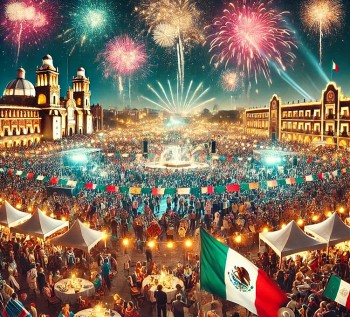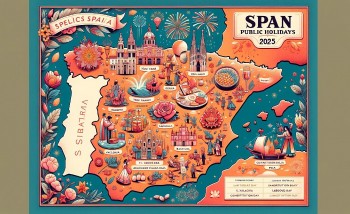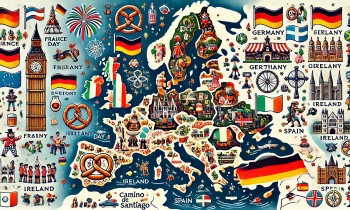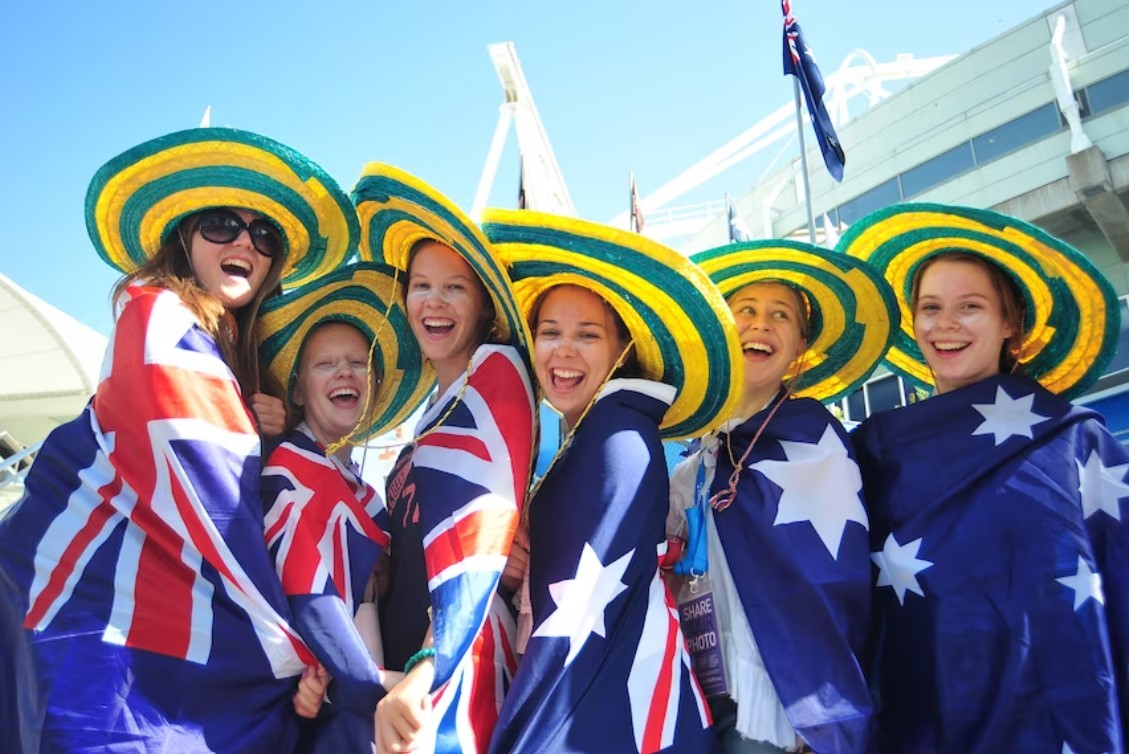Latin America Calendar: List of Holidays, Festivals with Unique Traditions
Overview: Public Holidays in Latin America 2025
Public holidays in Latin America vividly showcase the region’s rich cultural diversity, historical milestones, and deep religious roots. Across the continent, countries celebrate a blend of universal holidays like New Year’s Day and Christmas, alongside distinctive national events such as Mexico’s Day of the Dead and Peru’s Inti Raymi festival.
Many celebrations are tied to Catholic traditions, including Holy Week and Carnival, while others mark independence or honor indigenous heritage. These holidays are brought to life through vibrant parades, traditional dances, music, and festive gatherings that strengthen community bonds and national pride.
Discovering Latin America’s public holidays offers a fascinating window into the region’s history, traditions, and the infectious energy of its people.
List of Public Holidays in Latin America 2025
 |
| Public Holidays in Latin America 2025. Image: KnowInssuders |
January
New Year’s Day (January 1)
- Celebrated in: All Latin American countries.
- Unique Traditions by Country:
- Brazil: Coastal areas host spiritual rituals to honor Yemanjá, the goddess of the sea, alongside fireworks. People throw flowers into the ocean for blessings.
- Chile: Families eat lentils at midnight for prosperity.
- Mexico: Many practice the custom of eating 12 grapes at midnight, each grape representing a wish for the new year.
Epiphany / Three Kings' Day (January 6)
- Celebrated in: Mexico, Puerto Rico, Dominican Republic, and other Catholic-majority countries.
- Significance: Commemorates the visit of the Magi to the infant Jesus, symbolizing the revelation of Christ to the world.
- Unique Traditions by Country:
- Mexico: Families gather to share a "Rosca de Reyes," a sweet bread containing a hidden figurine of baby Jesus. The person who finds the figurine hosts a tamale feast on Candlemas (February 2).
- Puerto Rico: Children leave grass and water under their beds for the camels of the Three Kings, who leave gifts in return.
 Mexico Calendar 2025 - List of Public Holidays, Observances, And Celebrations Mexico Calendar 2025 - List of Public Holidays, Observances, And Celebrations |
February
Carnival (Variable Dates, February 2025: February 8–13)
- Celebrated in: Brazil, Trinidad and Tobago, Venezuela, and other countries.
- Significance: Carnival is a vibrant celebration before Lent, a time of fasting in Catholic tradition. It represents indulgence, community, and joy.
- Unique Traditions by Country:
- Brazil: Rio de Janeiro’s Carnival is world-famous for its samba parades and extravagant floats. Salvador da Bahia emphasizes Afro-Brazilian traditions with street parties and music.
- Colombia: Barranquilla Carnival combines indigenous, African, and Spanish elements, featuring masks, cumbia dances, and parades.
- Bolivia: Oruro Carnival includes a blend of indigenous mythology and Christian beliefs, highlighted by the Diablada dance, symbolizing the triumph of good over evil.
March
International Women’s Day (March 8)
- Celebrated in: Argentina, Cuba, and other nations.
- Significance: A day to honor women’s achievements and advocate for gender equality.
- Unique Observances:
- Argentina: Women often march for equal rights and against gender-based violence.
- Cuba: Public celebrations include cultural events recognizing the contributions of women to Cuban society.
 How Many Special Days for Women In A Year, Including Women's Day How Many Special Days for Women In A Year, Including Women's Day |
April
Holy Week (Variable Dates, April 2025: April 13–19)
- Celebrated in: All predominantly Catholic countries.
- Significance: Commemorates the Passion, Death, and Resurrection of Jesus Christ.
- Unique Traditions by Country:
- Guatemala: Antigua is famous for its intricate alfombras (sawdust carpets) laid along processional routes, featuring detailed religious art.
- Peru: In Cusco, Holy Week includes a blend of Catholic rituals and Andean traditions, such as offerings to Pachamama (Mother Earth).
- Mexico: Passion plays, particularly in Iztapalapa, reenact the crucifixion with dramatic realism.
May
Labor Day (May 1)
- Celebrated in: All Latin American countries.
- Significance: Honors workers’ rights and labor movements.
- Unique Traditions by Country:
- Chile: Labor unions organize marches demanding improved working conditions.
- Cuba: Havana hosts a massive rally in Revolution Square, with speeches highlighting socialism and labor solidarity.
Battle of Puebla (Cinco de Mayo) (May 5)
- Celebrated in: Mexico.
- Significance: Commemorates the 1862 victory of Mexican forces over French invaders in Puebla.
- Unique Traditions:
- Particularly celebrated in Puebla with reenactments, parades, and traditional dances. While widely known in the U.S. for its Mexican-American cultural significance, it is not a major holiday elsewhere in Mexico.
 2025 Brazil Calendar - Full List of Public Holidays And Observances 2025 Brazil Calendar - Full List of Public Holidays And Observances |
June
Inti Raymi (June 24)
- Celebrated in: Peru and Andean countries.
- Significance: An Incan festival dedicated to Inti, the sun god, marking the winter solstice and harvest.
- Unique Traditions:
- In Cusco, a grand reenactment of Incan rituals takes place at Sacsayhuamán, featuring traditional costumes, dances, and offerings to the sun.
- Bolivia and Ecuador host smaller-scale celebrations with indigenous communities honoring Pachamama (Mother Earth).
July
Independence Days
- Venezuela (July 5): Commemorates the signing of the Venezuelan Declaration of Independence in 1811. Celebrations include parades and military displays.
- Argentina (July 9): The day marks Argentina’s declaration of independence in 1816, with patriotic ceremonies and performances of folk music and tango.
- Colombia (July 20): Celebrates Colombia’s independence from Spain with parades, cultural events, and displays of national pride.
September
Independence Day in Mexico (September 16)
- Significance: Marks the start of Mexico’s war of independence in 1810.
- Unique Traditions:
- The President leads the "Grito de Dolores" in Mexico City on the night of September 15.
- Fireworks, mariachi music, and regional cuisine are central to the festivities.
 2025 Argentina Calendar - Full List of Public Holidays And Observances 2025 Argentina Calendar - Full List of Public Holidays And Observances |
October
Día de la Raza / Cultural Diversity Day (October 12)
- Celebrated in: Argentina, Venezuela, Colombia, and others.
- Significance: Originally marked Columbus’s arrival in the Americas, now reinterpreted to honor indigenous cultures and diversity.
- Unique Observances:
- Argentina: Renamed “Day of Respect for Cultural Diversity” to highlight multicultural heritage.
- Venezuela: Celebrates “Day of Indigenous Resistance” to honor indigenous struggles against colonization.
November
Day of the Dead (November 1–2)
- Celebrated in: Mexico, Guatemala, and parts of Central America.
- Significance: Blends indigenous and Catholic traditions to honor deceased loved ones.
- Unique Traditions by Country:
- Mexico: Families create intricate altars (ofrendas) with flowers, candles, and mementos. Skulls made of sugar (calaveras) are iconic.
- Guatemala: Villages like Sumpango and Santiago host giant kite festivals, symbolizing communication with the dead.
December
Christmas (December 25)
- Celebrated in: All Latin American countries.
- Unique Traditions by Country:
- Venezuela: In Caracas, people roller-skate to church for the early morning Christmas Mass.
- Puerto Rico: Parandas (Christmas caroling with instruments) and extended celebrations lasting until Three Kings' Day are common.
- Chile: Midnight dinners featuring pan de Pascua (Christmas bread) and cola de mono (a traditional holiday drink) are popular.
Conclusion
Latin America’s public holidays reveal the region’s cultural diversity and shared history. From globally recognized events like Carnival to uniquely local traditions like Inti Raymi and the Day of the Dead, these holidays offer a glimpse into the values and spirit of Latin American nations. They are not merely days off but occasions of deep cultural significance, fostering community, pride, and joy.
Frequently Asked Questions
-
What are the most widely celebrated public holidays in Latin America?
New Year’s Day, Holy Week, and Christmas are celebrated across the entire region.
-
Which public holiday is unique to Peru?
Inti Raymi, the Incan festival of the sun, is uniquely celebrated in Peru.
-
What is the significance of Carnival in Latin America?
Carnival marks the period before Lent and is known for its vibrant parades, music, and cultural expressions.
-
How is the Day of the Dead celebrated in Mexico?
Families create altars, visit cemeteries, and celebrate the lives of deceased loved ones with food, music, and offerings.
-
Do all Latin American countries celebrate Independence Day?
Yes, but the date and traditions vary based on each country’s history of independence.
 US Calendar 2025 - Full List of Public Holidays And Observances: Dates and Celebrations US Calendar 2025 - Full List of Public Holidays And Observances: Dates and Celebrations Check out USA Calendar in 2025 for a complete list of public holidays, federal holidays, state holidays and observances. KnowInsiders also keeps you up to ... |
 Spain Calendar in 2025 - Public & Regional Holidays: Significance And Celebrations Spain Calendar in 2025 - Public & Regional Holidays: Significance And Celebrations Spain’s culture was shaped by its long history and diversity of nations. Today a colorful, passionate, temperamental country celebrates festivals and holidays all-year-round, Obtain the ... |
 Europe Calendar 2025 - List of Public Holidays and Celebration Europe Calendar 2025 - List of Public Holidays and Celebration Here, we explore these holidays on a month-by-month basis, detailing their origins, significance, and ways of celebration across Europe in 2025. |


























